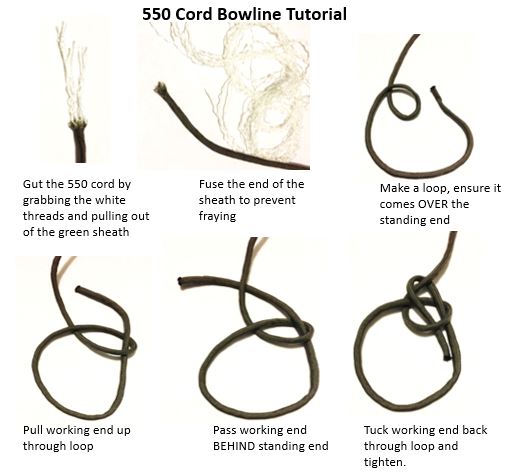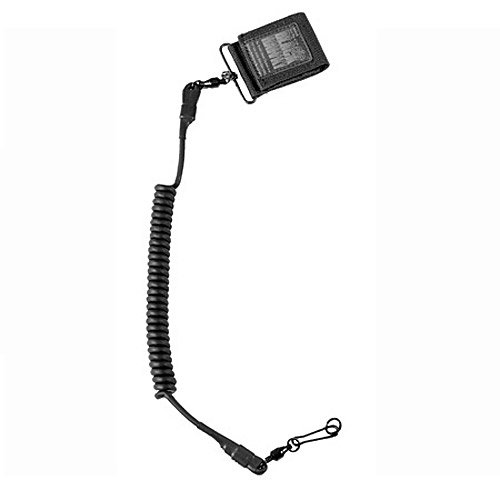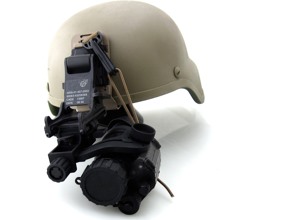Dummy Cord It: How to Tie Down Gear You Don’t Want to Lose!

DEFINITION: The term dummy cord refers to tying gear to something to prevent it from getting lost. In the Army tie down procedures are usually found in the Standard operating Procedures (SOP) and it is regularly checked by your supervisor (during PCC/PCIs) before any mission. Optics dummy cord to the weapon itself, along with your PEQ-15 (laser designator). Canteens, compass, flashlight, pretty much anything that could affect your life or the mission if lost would also have the dummy cord.
Dummy cords are also useful for civilians. Kayakers dummy cord paddles to their kayak in case they drop them. Hikers and Backpackers dummy cord their GPS to their belt or pack. A fisherman dummy cords their rod to the side of the boat or a cleat. Photographers dummy cord their cameras. You get the picture, if it is going to be detrimental to you if you lost the item, dumy cord it to yourself somehow!
This post is going to discuss some Tactics, Techniques, and Procedures (TTPs in Army jargon) to dumuy cord different items, using different cordage (primarily 550 cord) and the best knot to use for dummy cords.
What Should I Dummy Cord?
We dummy cord everything we do not want to lose! It may sound absurd to civilians, but put yourself in an infantryman’s boots for a minute…they are crawling around through thick brush, and may have to take off in a dead sprint at a moment’s notice.
Things are going to “jiggle” loose and fall out of pockets or pouches, or the mounting screws are going to loosen with sustained weapon firing. If it is dummy corded to the Soldier it will just get dragged behind them and they can grab it and put it back where it belongs.
Think about a GPS, compass, or radio they need to get to the objective or communicate with other members of their squad. It may be a satellite phone that is their only link to medical evacuation. I have compiled a list of items that can apply to hikers, backpackers, campers, and service members that should use a dummy cord:
- GPS
- Night Vision Devices
- Go Pro Camera
- Compass
- Water Canteens
- Weapon Accessories
- Sidearm
- Flashlight
- Knife
- Binoculars
- Canteens
This list is definitely not all inclusive, best thing to remember is if it is mission essential or expensive, dummy cord it!
What is 550 Cord / Paracord?
550 Cord or paracord was once used as the lines for an army parachute, but now is universally used a general purpose cordage for the military.
There is always a large spool of 550 cord in any supply office. So what are the technical specs for this “string”?
Diameter: 4 mm
Guts (Yarns): 7
Tensile Strength: 550 lbs
550 Cord or paracord (this is the last time I am calling it paracord) is 7x strands of white nylon, each piece has 3 braided nylon strands (called yarns). You can purchase military grade 550 cord on Amazon, but beware of counterfeit cord. It doesn’t have the standard 550 lbs tensile strength and is sold more as a “craft” cord. I like to get my 550 cord from “Paracord Planet” on Amazon, its Mil-Spec and tested to 550 lbs. Click here to check latest pricing.
How to Dummy Cord Your Gear
The basic concept of the dummy cord is that the Soldier ties down gear to a part of their kit, that is usually the IOTV, the pouch for the gear, or belt loops, etc. For weapon accessories, it is easier to just dummy cord your optics to the weapon, if you misplace the weapon your totally screwed anyway. There are two main accessories here, first, your optic and laser…the optic can be dummy corded using 550 cord or you can use zip ties. In this first example a zip tie is used as the dummy cord.
dummy cord a cog
I prefer using 550 cord, as it is readily available and I am always afraid the zip tie will bind and break. You can see an example of the 550 cord dummy cord on an optic to the right here. We used to use bailing wire, but it kept snagging on our kit during movements and breaking, so my unit banned it from the arms rooms. I still see some units using it on occasion, but I don’t recommend it.
M68 CCOscan be dummy corded in a similar manner using an “X” formed by a half hitch and square knot. You then tie the other end of the 550 cord around the non-moving portion of the handguard retainer ring on the M4 or M16 with an “end of line bowline” knot.
Laser Devices and/or Surefire flashlightsshould also be dummy corded in the same manner, again recommend using a bowline as the best dummy cord knot. A lot of guys dummy cord them to the front sight post, of course, make sure it doesn’t interfere with the sighting of the weapon.
You also need to dummy cord the antenna for your MBITR or PRC-152 (may need to use tape) and/or 1523 ASIP manpack radio antennas. The antennas tend to work their way loose, and can fall off without you noticing. If you have a hand mic you can easily dummy cord the antenna right onto your vest, and just use the hand mic to transmit. If you are really busting brush it is never a bad idea to also dummy cord your MBITR transceiver to your IOTV, because if you lose it there will be hell to pay…
NVGs should be dummy corded somewhere on your kit when not in use, but attached to your ACH when in use. I normally get stuck with PVS-7Bs, but you can dummy cord PVS-14s in the same manner. I take some cord and go through the holes one on each side in the front then slip the loop through the retention strap in the back of the ACH.
How to Tie a Dummy Cord Knot (Bowline Knot)

The bowline is the preferred dummy cord knot for securing gear and equipment. Soldiers prefer the bowline because it will not slip or bind. I also like to remove the “guts” from the 550 cord to make the dummy cord smaller in diameter, and it holds better. It is also beneficial to fuse the ends of the cord with a lighter to prevent fraying of the rope (You can always tell who cares and who doesn’t based on the fraying of their tie downs, or absence of fraying). See pictures below for a demonstration.
Alternative Dummy Cord Methods
There are several commercial gadgets that can make dummy cords easier. There are two that I currently use for my sensitive gear. You do have to pay for them, but for me they are worth the money for the added bit of convenience they provide over the traditional 550 cord tie down, particularly for items you store on your kit, but still need to use often.

The first one is a pistol lanyard. I have one of these for my lensatic compass, GPS, and pistol. It is made by Blackhawk, and is super durable. It is a coiled plastic cord (think 1980s telephone cord) that you can attach to your belt loop, Improved Outer Tactical Vest (IOTV), or pistol holster. Click here to check latest price on Amazon.
There is another great device I recently found for NVGs (specifically PVS-14 models). It is made by Combat Ready and is specifically made for the PVS-14A model. It easily mounts to the mounting plate on your ACH and has a quick release buckle that attaches to an elastic cord attached to the NVGs. They aren’t on Amazon, but you can get them by clicking here.

To Sum It All Up…
I have discussed my experience with tie downs and dummy cords, what do you think? Leave a comment below. And remember to tie everything down to avoid that FLIPL and angry platoon sergeant. I am anxious to hear your tips for tie downs or horror stories from losing something that was not properly tied down.
For additional resources on useful knots I HIGHLY recommend the “Animated Knots” website. Those guys have done a great job demonstrating how to tie every knot you can think of. Click here to check it out.
